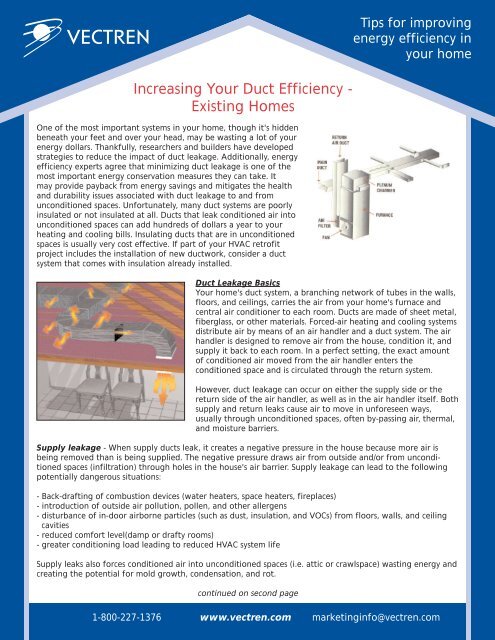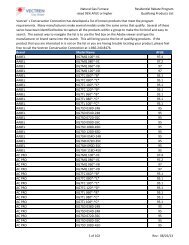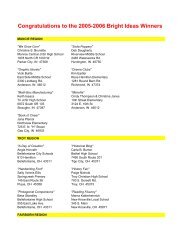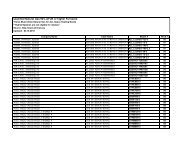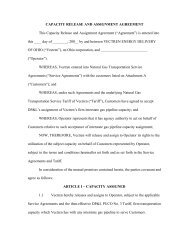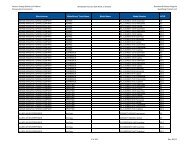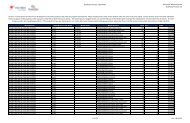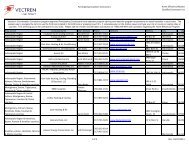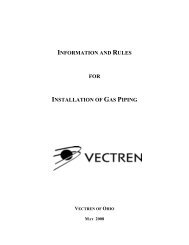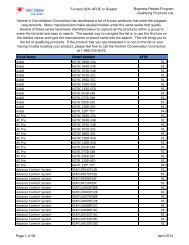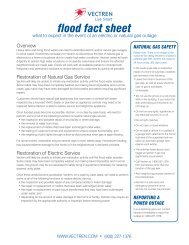Increasing Your Duct Efficiency - Existing Homes
Increasing Your Duct Efficiency - Existing Homes
Increasing Your Duct Efficiency - Existing Homes
Create successful ePaper yourself
Turn your PDF publications into a flip-book with our unique Google optimized e-Paper software.
<strong>Increasing</strong> <strong>Your</strong> <strong>Duct</strong> <strong>Efficiency</strong> -<strong>Existing</strong> <strong>Homes</strong>One of the most important systems in your home, though it's hiddenbeneath your feet and over your head, may be wasting a lot of yourenergy dollars. Thankfully, researchers and builders have developedstrategies to reduce the impact of duct leakage. Additionally, energyefficiency experts agree that minimizing duct leakage is one of themost important energy conservation measures they can take. Itmay provide payback from energy savings and mitigates the healthand durability issues associated with duct leakage to and fromunconditioned spaces. Unfortunately, many duct systems are poorlyinsulated or not insulated at all. <strong>Duct</strong>s that leak conditioned air intounconditioned spaces can add hundreds of dollars a year to yourheating and cooling bills. Insulating ducts that are in unconditionedspaces is usually very cost effective. If part of your HVAC retrofitproject includes the installation of new ductwork, consider a ductsystem that comes with insulation already installed.Tips for improvingenergy efficiency inyour home<strong>Duct</strong> Leakage Basics<strong>Your</strong> home's duct system, a branching network of tubes in the walls,floors, and ceilings, carries the air from your home's furnace andcentral air conditioner to each room. <strong>Duct</strong>s are made of sheet metal,fiberglass, or other materials. Forced-air heating and cooling systemsdistribute air by means of an air handler and a duct system. The airhandler is designed to remove air from the house, condition it, andsupply it back to each room. In a perfect setting, the exact amountof conditioned air moved from the air handler enters theconditioned space and is circulated through the return system.However, duct leakage can occur on either the supply side or thereturn side of the air handler, as well as in the air handler itself. Bothsupply and return leaks cause air to move in unforeseen ways,usually through unconditioned spaces, often by-passing air, thermal,and moisture barriers.Supply leakage - When supply ducts leak, it creates a negative pressure in the house because more air isbeing removed than is being supplied. The negative pressure draws air from outside and/or from unconditionedspaces (infiltration) through holes in the house's air barrier. Supply leakage can lead to the followingpotentially dangerous situations:- Back-drafting of combustion devices (water heaters, space heaters, fireplaces)- introduction of outside air pollution, pollen, and other allergens- disturbance of in-door airborne particles (such as dust, insulation, and VOCs) from floors, walls, and ceilingcavities- reduced comfort level(damp or drafty rooms)- greater conditioning load leading to reduced HVAC system lifeSupply leaks also forces conditioned air into unconditioned spaces (i.e. attic or crawlspace) wasting energy andcreating the potential for mold growth, condensation, and rot.continued on second page1-800-227-1376 www.vectren.com marketinginfo@vectren.com
<strong>Increasing</strong> <strong>Your</strong> <strong>Duct</strong> <strong>Efficiency</strong> -<strong>Existing</strong> <strong>Homes</strong>Tips for improvingenergy efficiency inyour homeReturn leakage - When return ducts leak, a significant amount of the return air is drawn from unconditionedspaces and the outside atmosphere rather than from the house. This dirty air often bypasses the air handler'sfilter system. This leakage creates a positive pressure in the house because more conditioned air is being suppliedthan return air to be removed. This positive pressure forces air through any cracks or holes in the house'sair barrier. Return duct leakage can lead to the following potentially dangerous situations:- introduction of outside and/or unconditioned air, including moisture, dirt, and pollutants- reduced comfort level (conditioned air is leaving the house)- increased conditioning load leading to reduced HVAC system lifeReducing <strong>Duct</strong> Leakage<strong>Duct</strong> sealing is a primary way to decrease duct leakage. Researchers and builders have studied the duct leakagephenomenon for about 15 years and have found that sealing the duct system with a combination of fiberglassmesh and mastic is both inexpensive and cost-effective. Several residential studies have shown that thesesimple repairs can reduce total duct leakage saving 15%-20% of cooling and heating costs or about $60 annually.At an installed cost of about $200, this improvement generally pays for itself in less than four years. Thebasic premise of this concept is that the air barrier of the duct system needs to be continuous and directly connectedto the air barrier of the house.If you would like additional energy savings tips, please see our energy efficiency section at www.vectren.comor contact us by e-mail at marketinginfo@vectren.com.www.vectren.commarketinginfo@vectren.com


